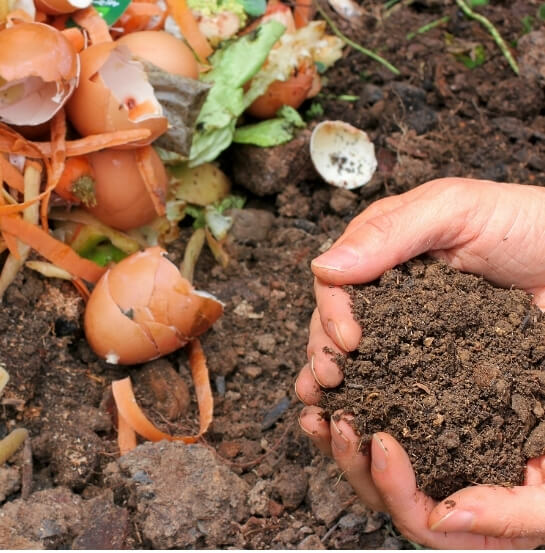- Blog
- Good practices
- Circular economy: what it is and what its principles and benefits are

Circular economy: what it is and what its principles and benefits are
- 12/09/2024
- Magda Cebrián
Navega por la publicación
The circular economy answers precisely this question: a way of redesigning the production and consumption system to keep resources in circulation and minimize waste.
In this model, each material has more than one life, and the planet and the economy benefit .
What is the circular economy?
The circular economy is an economic model that seeks to close the life cycle of products and materials . Unlike the linear economy, in which resources are extracted, used, and discarded, the circular economy is based on recovering, reusing, and recycling materials to ensure they can be reused.
This approach reduces the extraction of raw materials and minimizes the amount of waste we generate, promoting a shift toward a more sustainable and regenerative economic system .

Everloop brush created by NOS design that allows the interchangeability of multiple parts.
5 Principles of the Circular Economy
The circular economy is based on key principles that guide its objectives and practices. These principles range from product and service design to waste management. Key principles include:
- Redesign to Avoid Waste from the Source
This principle suggests that products should be designed with their entire life cycle in mind. They must be durable, repairable, and 100% recyclable at the end of their useful life. That is, before creating a product, its useful life is analyzed and what will happen when it is no longer useful in its original form. The idea is to avoid waste generation through design . - Use of sustainable and renewable materials.
This principle seeks to replace non-renewable resources with sustainable alternatives. It involves choosing biodegradable, recyclable, and less polluting materials . This way, products are better integrated into a circular production cycle, preventing them from ending up in landfills or incineration. - Reuse and Repair
In a circular economy, every product or material must be used to its full potential. This means encouraging reuse, such as reusing packaging and bags, and repairing products instead of disposing of them. In this way, we extend their useful life, help reduce environmental impact, and save resources.

Reusable tableware offered by Barcelona City Council to organizations.
4. Waste recycling and by-product utilization
When products reach the end of their useful life, recycling and material recovery play an important role. The goal is to reintegrate waste into the production cycle, converting it into raw material for new processes—in other words, into valuable resources. This approach supports the goal of zero waste , one of the most ambitious aspirations of the circular economy.
5. Sharing, renting, and accessing instead of owning
. The circular economy also promotes business models based on access and sharing. Instead of owning, you can rent or share goods, thereby reducing unnecessary production and waste. This principle fosters a culture of responsible and collaborative consumption .
Benefits of the circular economy
The circular economy offers a number of economic, environmental, and social benefits. Here’s a summary of the most important ones.
- Waste reduction and reduced environmental impact
By reducing waste generation and optimizing the use of materials, the circular economy promotes sustainable resource management and reduces pollution. The goal of zero waste is key, and if this approach is followed, greenhouse gas emissions can be significantly reduced throughout the entire value chain, an essential benefit for combating climate change. - Resource savings and lower production costs.
Maximizing the use of materials and products reduces the demand for raw materials, which in turn can lead to lower costs. This benefits both businesses and consumers , as lower production costs can also reduce product prices. Furthermore, the use of renewable and recycled materials can help businesses rely less on scarce or unsustainable resources. - Boosting innovation and job creation
The circular economy fosters innovation in design, materials, and processes. From product redesign to the creation of innovative reuse and recycling systems, new business opportunities emerge that promote economic growth. It also boosts the labor market by creating jobs in sectors such as repair, waste management, and recycling. - Promoting social responsibility and environmental awareness
The circular economy promotes a shift in mindset among both businesses and consumers, guiding them toward responsible and conscious consumption. When we adopt zero-waste practices , we are contributing to a more resilient world, which benefits both people and the planet.

Composting
Collective effort
For the circular economy to be truly effective, we need the commitment of everyone: businesses, governments, and citizens. Businesses can apply these principles to review and adapt their business models; governments can create policies that incentivize prevention, reuse, and recycling; and consumers can choose sustainable products and reduce waste in their daily lives.
The transition to a circular economy is a collective effort that requires a change in the way we produce, live, and consume. The circular economy is based on principles of sustainability and efficiency that seek to close the resource loop and minimize the environmental impact of our economic activity. Its implementation has great potential to improve our production system and foster a more just and planet-friendly society .

Collective effort
Summary and conclusions
Waste prevention is one of the foundations of the circular economy because it prevents materials from becoming garbage. Technology, innovation, and citizen participation play a key role in making this transformation possible.
✅ The best way to manage waste is not to generate it.
✅ Small daily gestures like using reusable bottles, buying in bulk, or repairing items make a big impact.
✅ Waste prevention brings environmental, economic, and social benefits
✅ Companies, city councils and educational centers can adopt measures that help prevent
Related News
The importance of sustainability in human resources
Sustainability has become a fundamental pillar in all areas of an organization, including Human Resources (HR). Today we explain why, its benefits, and practical examples.
How can we reduce the amount of waste we generate?
Did you know that you can reduce the amount of waste your business generates with simple and affordable alternatives?
What is a sustainable restaurant?
Eating well can be a way to care for the planet. Sustainable restaurants adopt responsible practices, eliminate waste, and are committed to the environment and the community. Want to know…



